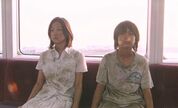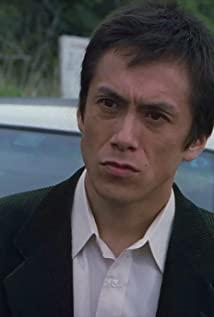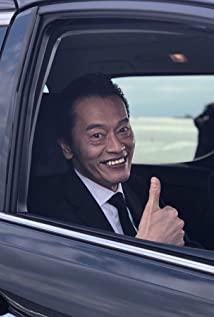This is a tragedy caused by the weak abandoning the weak. The instigator is the mother. A woman with a slightly aging face, although she has experienced the bitterness and absurdity of life, her mental age is still a minor, and she takes her four children from different fathers like a game. Her attitude towards life is too light, so her life also seems unreal. She has not planned and will not plan to bear the true weight of life as an adult. The bond that maintains a family is broken. Because of the confusion and lack of identity between the guardian and the ward, the children are also destined to be thrown into the turbulent current of society alone, and fend for themselves.
But the mother is also an outcast. Her running away was just an imitation of the men's running away again and again. Because the promised rights and obligations have never been fulfilled, these two key elements of life have also disappeared, in this woman's world. My life has been tumbling in the mud puddle, so I have become numb to filth and hardship. "You can't die anyway, you can always survive." This should be the truest thing the mother said to the children in the bottom of her heart.
"Don't I have the right to be happy?" When she asked her underage son in a grieving and artificial whisper, she had no doubt about ending her exile with the exile of the children.
Behind her, there was a small boat with no walls, no roof, and naked in the wild. People come and go around, but they all ignore it. The four children were abandoned in the crowd.
But their exile in the crowd began long before their mother left, perhaps since they were born. The dark suitcases, the unmanned staircase, the toys that no one dared to pick up on the balcony, and the rapid denial of the desire to go to school, one after another tangible and intangible cages confine the children. The imprisonment of the flesh is the exile of the spirit. Fortunately, they are not yet a troubled age, except for two older children.
The time of the whole film is very smooth and compact, and there is almost no pause, even if there is a reason to close up a detail, such as after a boy calls his mother and puts down the microphone. I am very curious to pay attention to the boy's expression or other body movements that may reveal his mood. But the director didn't give it, and easily let go of the opportunity to ferment emotions. I think he is trying to keep the film as plain and calm as possible. He used the time he never stopped to tell us that life is like this, and it won't slow down because of sadness.
But I noticed two time being slowed down or even parked in an exaggerated manner. One is that my brother took his sister to pick up my mother, and saw a Mercedes-Benz train on the way back. When the brother said, "I must take my sister on the train to see the plane in the future", the face of the brother and the long lights of the train are left in the picture. The light was like a huge insect, coming in from all directions, illuminating the boy's face again and again. This is the moment when dreams exist in reality. Although the children at this time are lonely, and even though they perceive the alienation of their mothers, they are still waiting for the return of their mothers. The family has not disintegrated yet, so life is enough to bear a beautiful dream. This dream went back and forth, lingering in the boy's heart, illuminating his hardship. He was determined to seize this dream. When he was looking forward to it, time slowed down, and trains came from far away again and again, representing light and hope in the dark night.
Another time to stop was when my brother ran wildly in the street. After refusing the money from friends to help him, he ran like an adult on the street for the first time-even though he was already alive as an adult. This is the moment when dreams hit reality head-on. The result was a broken dream. The street was bustling with hustle and bustle, but the sound of running footsteps was particularly clear in all kinds of noises, beating the world one after another, seeming to be accusing and crying, and that run seemed to have no end.
This movie is also a rare lack of music, just as there is no music in life. But whenever music appears, it is cheerful. The first long piece of music appeared when the children went out together hand in hand for the first time in their lives. The mother is nowhere to be found, but the child who stepped out of the cage is enjoying unprecedented comfort and joy. This is a concentrated flash of vitality. Before or since, the light of vitality has not been so dazzling and vigorous.
It is Hirokazu Edema who is also a master at using the details of things to show time. Without any words, only some objective phenomena of silent changes remind us: time has passed, such as gradually disheveled hair, worn-out chalk heads, decayed nail polish, broken piano, and dirty clothes. The passage of time in this way also reminds the story of the direction of the story: the no longer naive, perilous brother-sister relationship, the fragile home that is about to collapse, and the inevitable ending of a beggar. These silent details are like spells, making all the innocence and moments of happiness more painful. But in the face of these unclear words, the director's camera is so calm, drawing the pain and sorrow into an imperceptible filament, slowly wrapping the audience's heart.
The children picked up a handful of seeds on the side of the road. The kind of seed was the children themselves. They could have withered early in the streets where no one was cared about, and there was no shade. But they live desperately out of instinct, no matter how great the chance of survival is, they will be reduced to a part of the soil at any time.
It was Hirokazu Edema that beautified the true story that was more cruel. In reality, the world withered early in an ugly and depraved way: the eldest son finally did not get rid of the temptation of evil, and participated in the killing of one of his sisters, and was sent to the juvenile labor camp for this reason. The other surviving girl was dying of hunger, and the second son was left with a cold body for those who found it.
But I thank the director. He injected a vitality into the ugly reality, a weak but stubborn vitality, and he injected an endless life and hope. Without this vitality, "Nobody Knows" will become another "A Clockwork Orange", with no beauty, no moving, no hope, only ugliness, disgust and despair. These are two different ways of exposing ugliness: one is to move people's hearts with damaged beauty, and the other is to beat people's hearts with naked evil. The two are not inferior, but I prefer the former. Because I don't really eat a fly just because I want to know that it is unpalatable. Of course there are brave people who will do this. I lack courage.
The ending of the film best reflects the director's philosophy. The backlit silhouette on the grass, hair trembling slightly, a beautiful picture. But the beautiful picture conveys helpless pain. I did not see the familiar child again, his eyes flashed strong and precocious; now he has only cold and despair in his eyes, like a wandering little beast. His sister was buried in the dark soil like a small flower on the street. And what about him and the other children? The song has told us: the dark sky, the dark lake.
There is a kind of growth called death. Even if the director wants this little humble life to melt into the billowing life, to dilute its bitterness and refine its tenacity with the plain and endless years, we also know that life is not so compassionate.
View more about Nobody Knows reviews











